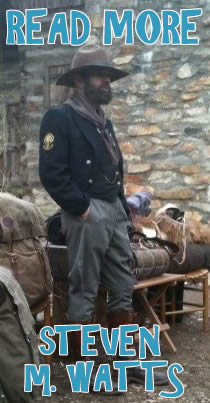“Going to the woods is going home, for I suppose we came from the woods originally.”
– JOHN MUIR, US naturalist, 1838—1914
The word origin of ‘Primitive’ comes from prime – meaning first. The foundation of man’s ‘first skills’ are cutting tools, cordage, and fire.
From these three tools you can start to build everything else you “need.” Steve Watts and a few others teach a class, “Abo 101,” that address these skills. As a part of this list, I would include “Plant Practicality.” Cordage, Fire (and many other things) require a practical knowledge of plants. This doesn’t necessarily mean being able to identify a plant by name, but having a practical knowledge of the plant properties that can make cordage, fire, and so much more.
Here is a little more on each…
Cutting Tools. Man was not born with Fang or Claw. When one of our ancestors accidentally cut himself with a rock for the first time and said “OW!” he realized the potential he could do in piercing things and separating matter. Cutting Tools also include things that abrade, scrape, and grind. And it is not just stone, “cutting” tools can be bone, shell, and even wood. Good rock can be a limited resource in some areas. It can be tens of miles (or more) in one direction before you find an area with rock sharp enough to slice. This is why a knife (or axe) is a most critical tool. Nonetheless, every Woodsman should know how to make a sharp edge from rock should they lose their knife. This is not a difficult thing once someone shows you how to do it the first time. Worse comes worse, bash some rocks and let the chips fall where they may.
Cordage. Before the nail was invented, man’s world was held together by cordage. Its uses, like duct tape today, are limitless, here are few; fire making, shelter, traps, snares, clothing, footwear, fishing line, bow stings, tool construction, crafts, containers, etc. Knowing how to make cordage from plants, animals and even manmade materials is a valuable skill. Some natural materials include hides, sinew, inner tree bark, woody stalks, leaves, grasses, rootlets, root bark, vine, and wood fiber.
Fire. What can you say… it is one of the sacred elements. Fire is woven through a Woodsman’s relationship to nature in so many ways it seems we are always trying to master it, no matter what our skill level. Knowing how to make primitive fire should be a top priority (after mastering modern survival). Although we don’t think about it in our modern world, fire is just as important to modern man… he just doesn’t realize it because it comes through a copper wire and he doesn’t see the flames under the hood. How soon people will learn if the lights ever go out. Check out this list of uses from from stoneageskills.com
While “Abo 101” is the place to start, there is much more to being Primitive.
The following is a Primitive Skills Checklist from an article entitled Going Wild – Organizing a Primitive Living Experiment by Alice Tulloch in the Fall 2007 edition of the Society of Primitive Technology’s Bulletin of Primitive Technology.
Per the article, it is for discussion purposes only and it is not intended for one person to have every skill mentioned. Nor is it supposed to be a complete list. A person would bring a set of skills to the tribe and hopefully the tribe could meet its goals.
Social Skills
- Ability to work in a team, for the common good
- Ability to receive criticism and to effectively offer constructive criticism
- Desire to work harder than others, and take the initiative to get things done for the common good
- Ability to maintain a positive attitude
- Knowledge of primitive games, fun, music and celebrations
Travel
- Ability to hike solo over unfamiliar terrain without getting lost
- Ability to guide others, physically and verbally, to a location unknown to others
- Ability to read the landscape to anticipate the easiest route of travel, and the location of water, game, plants and useful materials
- Knowledge of safe stream crossings, snow crossings and rough terrain travel
- Knowledge of long distance travel strategies and the economic calendar of the area
- Good physical condition, moderate body fat, tough feet
- Ability to hike 5-15 miles per day with a 30-lb. pack
Fire
- Consistently started fire by friction using a variety of materials
- Made a successful friction fire set from materials on-site using stone age tools
- Consistently made friction fire in the rain, snow and dark
- Experience using fire for cooking with pottery, stone boiling and pit bake
- Experience banking fire or other methods to maintain coals overnight
- Carrier fire using a long match from one camp to another
- Used fire to bend wood
- Used fire to coal-burn a container
Shelter
- Made a nearly waterproof wickiup, lean-to and debris hut and slept in them
- Made a coal bed and slept on it
- Slept in a primitive shelter using only natural, local bedding and stone age gear
- Made a primitive shelter in the rain or snow and slept in it
- Made a woven or sewn tule or cattail mat
Food (See also next two categories)
- Has lived completely off the land for one week
- Ditto, in each of the four seasons in your area
- Proficiency with a variety of food storage techniques and pest controls, including smoking, drying, rendering, granaries, and caches
Plants
- Has a thorough knowledge of plant families and their characteristics
- Has a thorough knowledge of original people’s plant uses, harvesting, processing, and storage methods in the area
- Has a thorough knowledge of medicinal plants and their uses in the area
Trapping, Fishing, and Hunting
- Has a thorough knowledge of the habitats and habits of the fish and wildlife in the area. Has an understanding of sustainable harvesting
- Has skill in reading animal signs and tracks
- Has captured animals with primitive deadfalls, snares and traps
- Can construct 4 kinds of triggers on site using stone tools
- Can construct 2 kinds of snares on site using stone tools
- Has caught fish using primitive line and lure, spear, fish trap and/or gill net
- Knowledge of stalking and skill hunting techniques
- Harvested a big game animal with stone age equipment
- Made and is proficient with primitive bow and arrow, atlatl and dart, and throwing stick
- Butchered and skinned an animal with stone tools
Clothing
- Made buckskin using only stone age tools and brains of the animal
- Made a complete set of buckskin clothing including shirt/dress, leggings/skirt and moccasins
- Sewn buckskin with only stone age tools and materials
- Tanned fur-bearing animal and made garment from the fur
- Knowledge of rawhide processing and construction methods
- Knowledge of bark tanning process
- Made clothing out of plant fiber (examples: tumpline, sagebrush sandals, cedar bark blanket)
- Made and used winter footwear in wet or snowy weather. Knowledge of greased or insulated footwear
- Knowledge of clothing, equipment and methods to deal with cold and rainy conditions
Basketry and Cordage
- Made baskets from a variety of materials and techniques including a burden basket and water-tight basket (without pitch and sealant)
- Made baskets sealed with pitch or other sealant
- Knowledge of netting techniques
- Knowledge of stone boiling in a basket
- Made cordage from a variety of materials and techniques
- Made rope from many strands braided and multi-plied
Pottery
- Made a fired pot holding 1 gallon from wild harvested clay
- Knowledge of cooking with pottery on a fire
Knapping
- Competency in basic spalling, percussion and pressure flaking, pecking and hafting
- Made uniform thin, straight blades, 5 inches or longer, using stone age tools (no copper)
- Made and proficient in use of scrapers, burins and drills
- Made and proficient in use of stone axe
- Knowledge of heat treating stone
- Made tools from a variety of stone
- Knowledge of useful stone materials in the area
Bone and Antler Tools
- Made bone and antler tools with stone age equipment, including fish hooks, spears, awls, needles
- Used bone or antler for wedges, cutting, stabbing, sawing, pounding and knapping
Woodsmanship
- Knowledge of security measures regarding wolves, bears, mountain lions, rattlesnakes, scorpions, etc
- Awareness of weather changes and patterns
- Awareness of wildland fire behavior and safety measures
- Has developed their intuition and woods savvy
- Awareness of changes in natural flow (bird and bug chatter, wind direction, etc)
- Knowledge of collection, preparation and use of pitch and glues, mineral pigments
- Knowledge of useful knots including fisherman’s, bowline, square, clove hitch, tauntline, and stopper knots
- Knowledge of lashing and splicing
- Knowledge of telling time by the sun and stars
Healthcare
- Knowledge of primitive hygiene concerns, preventative measures and remedies
- Thorough knowledge of backcountry first aid, CPR and evacuation methods
- Knowledge of infectious diseases, adverse syndromes, hypothermia, parasites and poisonous plants that occur in the area; preventative measures and modern treatment
- Knowledge of how a wild diet and primitive activities impact nutritional needs












